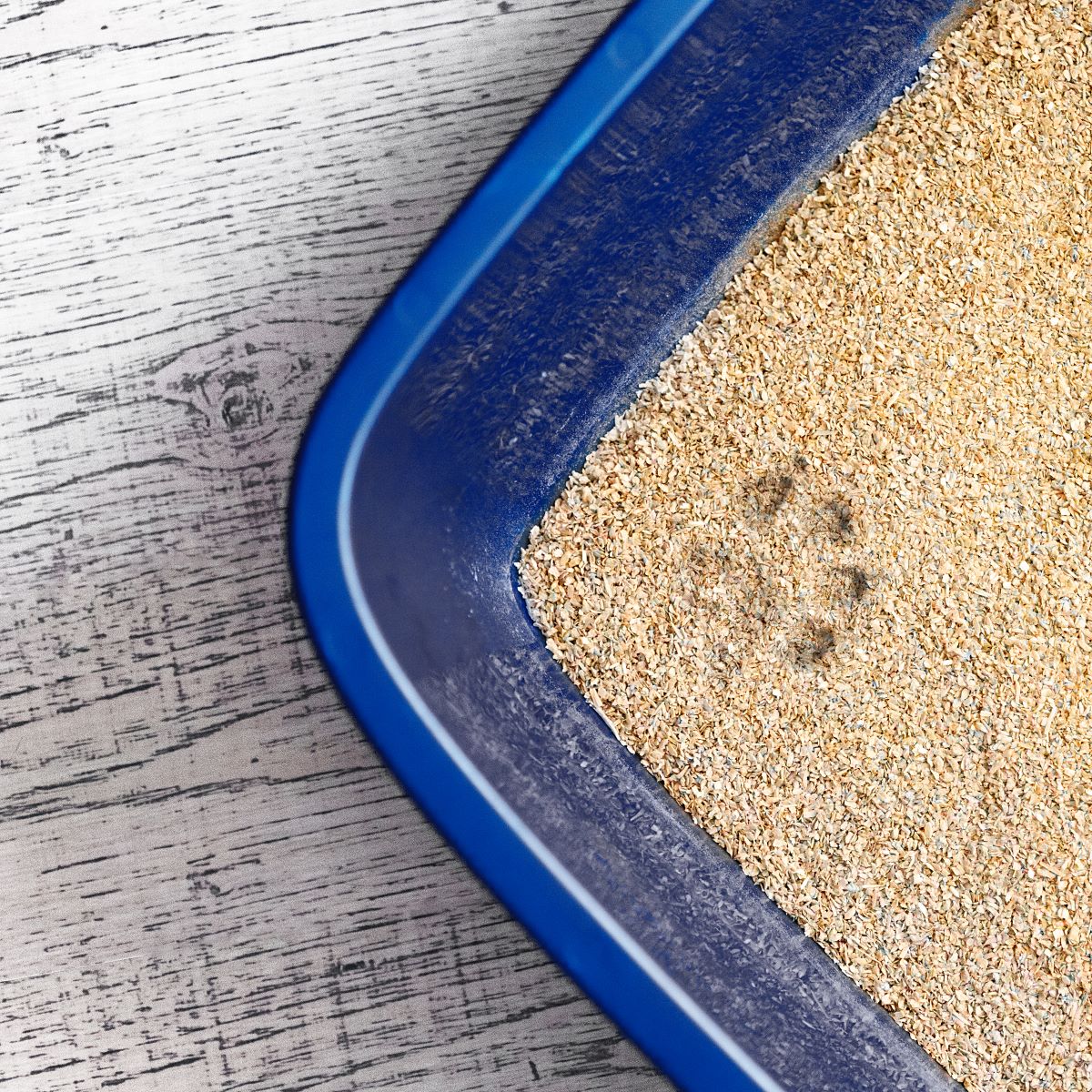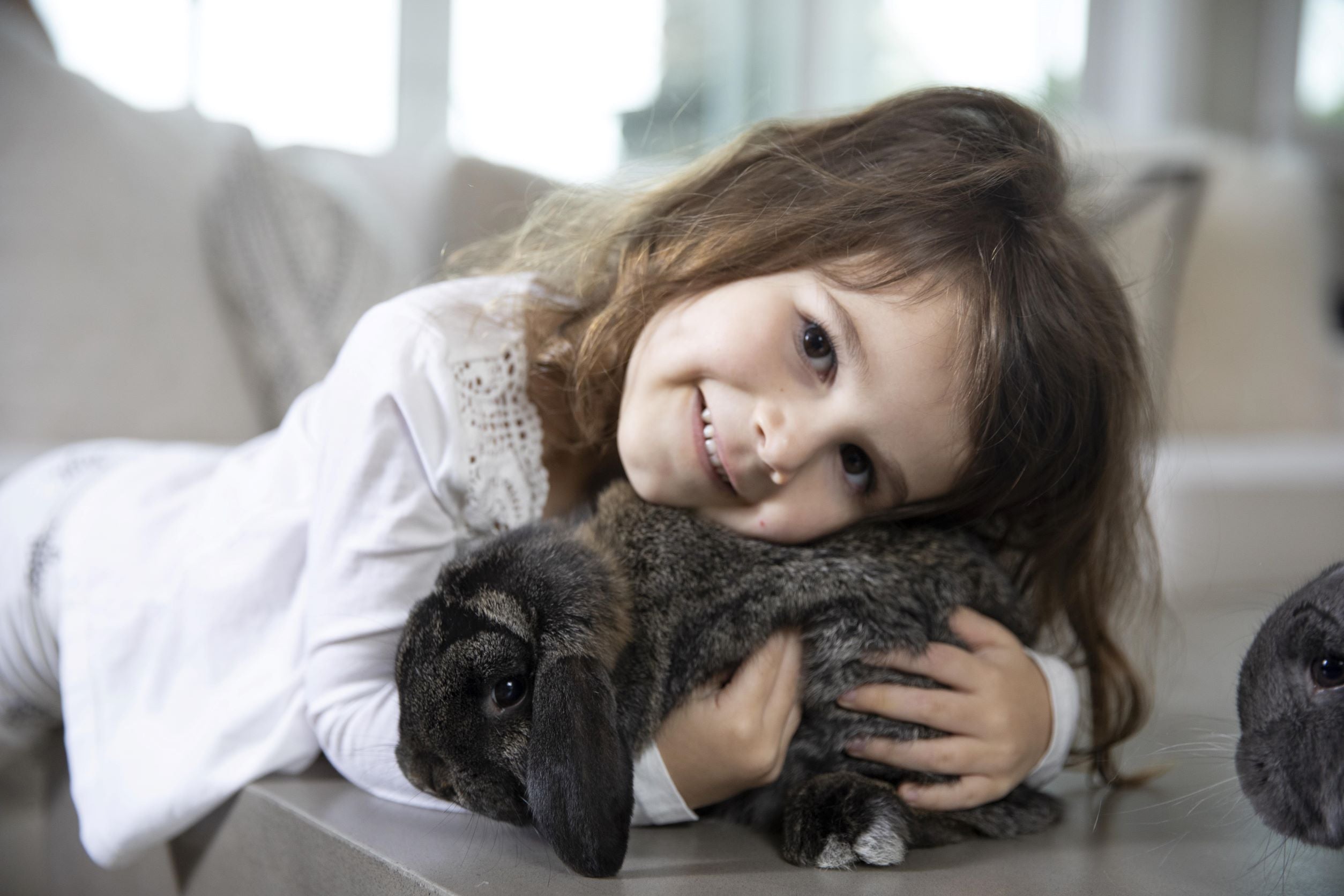Litter vs. Bedding: What’s Best for Your Small Pet?
If you share your home with a bunny, guinea pigs, ferrets, or hamster, you already know—these little pets bring big joy (and sometimes big messes).
The secret to keeping them cozy, clean, and your home smelling fresh? Knowing the difference between bedding and litter—and how to use both like a pro.
What’s the Difference Between Bedding and Litter?
Think of bedding as your pet’s cozy mattress. It’s soft, comfy, and perfect for snuggling, nesting, and lounging.
Litter, on the other hand, is the “bathroom zone.” It’s designed for absorption and odor control, usually placed in a corner litter box or a specific potty area.
When you use both correctly, you get the best of both worlds—happy pets and easier cleanup.
🐇 Rabbits
Rabbits are naturally tidy and can actually be litter trained!
Bedding: Use soft, absorbent natural paper bedding in their main living space.
Litter: Set up a litter box filled with natural, absorbent paper or wood-based litter such as carefresh Rabbit & Ferret Litter.
🧺 Pro tip: Avoid clay or clumping litters—they can be harmful if your bunny decides to nibble.
🐹 Guinea Pigs & Hamsters
These little burrowers love to dig, tunnel, and nap the day away.
They need thick, soft bedding that’s gentle on tiny feet and helps control odor.
Try natural paper bedding like carefresh®, made from ultra-soft, sustainable paper fiber that stays fresh longer between cleanings.
Avoid using litter alone—it’s not comfortable or safe for nesting.
🦦 Ferrets
Ferrets are playful and surprisingly clean! Most will pick a corner to go potty, so adding a small litter box is key.
Bedding: Soft paper bedding for resting and play.
Litter: Dust-free, absorbent litter in their potty area.
Place the litter box where your ferret naturally likes to go—it makes training easy!
🌿 Why Natural Materials Matter
Your small pet’s lungs (and yours!) will thank you for choosing natural, low-dust materials.
Natural paper and wood fiber beddings:
Keep the air cleaner
Control odor naturally
Are compostable and biodegradable
That means a happier pet and a greener planet. 🌎
💚 The Perfect Combo
For the happiest, healthiest habitat:
Bedding for softness and warmth
Litter for cleanliness and odor control
Your pet will love their cozy, fresh-smelling setup—and you’ll love how easy it is to maintain.
Give Them the Comfort They Deserve
carefresh® natural paper bedding is made from sustainable, reclaimed paper fiber that’s ultra-soft, super absorbent, and naturally controls odors for up to 10 days.
It’s the easiest way to keep your small pet’s home fresh, comfy, and planet-friendly.
🛏️ Learn more at carefresh.com
Read MoreEssential Gear for Recording Your Pet's Milestones and Adventures
Pets are more than companions—they’re family. Every wagging tail, clumsy leap, or unexpected milestone is part of their story, and many owners want to capture those memories to look back on for years to come.
Recording your pet’s adventures is not just about creating cute content; it’s also about preserving moments that reflect their unique personality.
Technology has made documenting pets easier than ever. From simple cameras to wearable gadgets, the right tools can help you capture everything from their first day at home to their most daring outdoor explorations. With the right gear, you’ll be ready to turn everyday moments into treasured memories.
Choosing the Right Camera
At the heart of recording your pet’s milestones is a reliable camera. Whether you’re filming your cat’s playful leaps or your dog’s first beach trip, a quality device ensures you don’t miss the details. The best choice depends on your lifestyle and the kind of adventures you want to capture.
For those who want to record immersive experiences, a 360 camera is an excellent option. It allows you to film in all directions at once, so you never miss the action—even if your pet suddenly bolts out of frame. This kind of camera is especially useful for energetic animals that rarely sit still.
Action Cameras for On-the-Go Fun
Pets love to move, and action cameras are built to keep up with their energy. Compact, durable, and often waterproof, these devices are perfect for outdoor play, hikes, or trips to the park.
With wide-angle lenses and image stabilization, they can handle the unpredictable motion that comes with filming pets.
Some action cameras can even be attached to your pet’s harness, giving you a “pet’s-eye view” of their adventures. Just be sure the gear is lightweight and comfortable, so it doesn’t interfere with your pet’s natural movement.
Smartphone Tools and Add-Ons
For many pet owners, the easiest recording device is already in their pocket. Modern smartphones come equipped with high-quality cameras capable of capturing video and photos in stunning detail.
With the right settings, you can take slow-motion videos of playful jumps or crisp portraits of your pet lounging at home.
Accessories can make smartphone recording even better. Tripods, clip-on lenses, and remote shutters add versatility, while editing apps help polish the final product. The convenience of smartphones makes them ideal for spontaneous moments you don’t want to miss.
Audio Equipment for Capturing Personality
Recording isn’t only about visuals—sound adds depth to your pet’s story. From the joyful bark of a dog greeting you at the door to the soothing purr of a cat on your lap, audio brings your recordings to life. Investing in a small microphone or audio recorder can make a big difference.
Some cameras come with built-in microphones, but external ones often deliver clearer results. Directional microphones help isolate your pet’s sounds while reducing background noise, ensuring those memorable barks, meows, or chirps aren’t lost.
Lighting Tools for Clearer Shots
Good lighting can turn an ordinary clip into something extraordinary. Natural light often works best, especially for outdoor shots where pets are most active. Indoors, however, lighting can be trickier, and dim conditions may cause videos to look grainy.
Ring lights, portable LED panels, or clip-on smartphone lights can brighten up indoor scenes. With better lighting, you’ll be able to capture sharp, vibrant images that showcase your pet’s expressions and movements clearly.
Editing Software to Tell the Story
Capturing raw footage is only the first step. Editing allows you to craft a narrative, highlight milestones, and share polished clips with friends and family. User-friendly software makes it possible to trim, add music, and create sequences that showcase your pet’s best moments.
Many editing programs also offer fun features like filters, slow-motion effects, or text overlays. Whether you’re documenting a puppy’s growth or putting together a compilation of your parrot’s funny phrases, editing helps bring structure to your pet’s story.
Sharing Memories with Community
Pets often bring people together, and sharing their stories can spread joy beyond your household. Social media platforms, private family groups, or even printed photo albums are all ways to showcase your recordings.
Documenting milestones not only celebrates your pet but also connects you with others who understand the bond between humans and animals.
When sharing publicly, always prioritize your pet’s comfort and privacy. Avoid situations that could stress them out just for the sake of a recording. The goal is to honor their life in a way that reflects care and respect.
Capturing the Heart Behind the Lens
Recording your pet’s milestones is about more than gadgets and gear. It’s about noticing the little moments that make them unique and cherishing the time you have together. Technology simply gives you the tools to hold onto those memories more vividly.
Every wag, leap, and purr tells a story worth keeping. By choosing the right equipment and approaching the process with patience and love, you’ll create lasting reminders of the joy pets bring into your life.
Read MoreTips for Traveling with Your ESA
Image source: https://unsplash.com/photos/closeup-photography-of-woman-holding-adult-golden-retriever-sWkkIiTJMYc
A Brief Overview of Emotional Support Animals
An Emotional Support Animal is a companion that helps individuals manage mental or emotional health challenges. Providing comfort through their presence, ESAs can alleviate feelings of stress, anxiety, or depression.
Unlike service animals, ESAs do not require formal training to perform tasks. Their primary role is to offer emotional stability rather than physical assistance.
For those in the U.S. looking to get an ESA, securing a letter from a licensed mental health professional is essential. If you're in Texas, you can access information specific to the state through this Texas ESA letter guide.
This document certifies your need for the support the animal provides and ensures compliance with applicable regulations.
Visiting Restaurants with Your ESA
Many restaurants offer pet-friendly patios, allowing both you and your furry friend to enjoy a relaxed dining experience.
Some top places to try are:
Trendy Diners: Enjoy brunch dishes with your ESA at your side.
Cozy Coffee Shops: Sip freshly brewed coffee in a welcoming atmosphere.
Craft Breweries: Delight in locally crafted beers with great patio service.
Burger Joints: Savor delicious, high-quality burgers alongside your companion.
Dining out with your ESA is easy, thanks to pet-friendly spots that let you enjoy great food and quality time simultaneously.
Exploring Parks with Your ESA
Explore the great outdoors with plenty of green spaces offering trails and designated off-leash areas:
Spacious Parks: Perfect for giving your ESA some freedom to roam safely.
Urban Parks: Featuring serene paths and beautiful natural settings.
Parks with Panoramic Views: Ideal for peaceful walks and breathtaking scenery.
Riverside Spots: Great for exploration and enjoying diverse terrain.
These parks offer the perfect mix of outdoor fun and bonding time with your ESA, whether you seek scenic views, quiet trails, or open spaces to play.
Dog-Friendly Hotels
Planning an overnight stay? Look for hotels that welcome pets, providing comfort and convenience for you both.
Consider:
Boutique Hotels: Stylish rooms with a welcoming pet policy.
Extended-Stay Options: Near great walking trails.
Luxury Accommodations: Tailored amenities for pet owners.
Modern Spaces: Embracing simplicity and ESA-friendly services.
These hotels make sure your trip is stress-free and inclusive of your furry companion.
More Tips for Traveling with Your ESA
Traveling with your ESA can be rewarding with some preparation:
Check pet policies for airlines, buses, or accommodations ahead of time.
Bring your ESA letter to avoid issues in public spaces.
Carry essentials like water, snacks, and waste bags during outings.
Focus on pet-friendly amenities such as outdoor patios or parks, and keep your ESA leashed unless in designated off-leash areas.
With thoughtful planning and awareness of local guidelines, your journey with your ESA becomes an enjoyable adventure for both of you!
Read MoreBack to Basics: How to Set Up the Purr-fect Litter Box with ökocat® Natural Cat Litter
Let’s be real: nobody adopts a cat because they love scooping litter boxes. But the truth is, when you nail the basics, the litter box doesn’t have to be a daily battle. In fact, it can be… dare we say… easy. Your cat gets a clean, cozy bathroom, and you get a fresher home (and way fewer side-eye glares from your feline roommate).
So, let’s go back to basics—because the secret to a happy cat household might just start with the litter box.
Step 1: Pick the Right Box (Yes, It Matters)
Your cat may not be picky about sleeping on your laptop keyboard, but when it comes to their bathroom, they definitely have opinions.
Bigger is better: Think of it like this—would you rather use a cramped porta-potty or a roomy spa bathroom? Same goes for your cat.
Covered or uncovered? Some cats want privacy. Others? Exhibitionists. Let them decide.
One per cat, plus one extra: It’s the golden rule. Sharing is not caring when it comes to litter boxes.
Step 2: Ditch the Clay, Go Natural
Here’s where ökocat® natural litter shines (literally—it’s wood-based and kind of beautiful). Unlike dusty, perfume-heavy clay litters, ökocat:
Locks in odors naturally (so your cat’s bathroom doesn’t become your home’s signature scent).
Is 99% dust-free (breathe easy, whiskers included).
Eco-friendly (good for your cat, your home, and the planet).
Gentle on paws (imagine a soft forest floor instead of gravel—much nicer).
Step 3: Layer It Just Right
Cats love to dig and cover. The sweet spot? About 2–3 inches of ökocat. Too shallow and they can’t cover. Too deep and you’ve basically created a wood-chip beach.
Step 4: Location, Location, Location
Think about where you would want a bathroom. Not in the middle of the kitchen, right? Same goes for your cat.
Quiet, low-traffic areas work best.
Away from food and water (cats are clean freaks).
Skip the scary laundry room with the noisy spin cycle—no one wants that bathroom anxiety.
Step 5: Keep It Fresh (Without Losing Your Mind)
Here’s the routine:
Scoop daily (your cat will thank you with fewer “accidents”).
Top it off weekly with fresh ökocat.
Swap completely every 4–6 weeks. Bonus: ökocat’s natural odor control means you’ll do full cleanouts less often than with clay.
Back to Basics = Back to Happy Cats
At the end of the day, your cat doesn’t ask for much: a comfy nap spot, food on time, and a litter box that doesn’t make them cringe. Set it up right with ökocat natural litter, and you’ll both breathe easier (literally). Because a happy litter box = a happy cat = a happier you.
Read MoreWhat to Do After a Dog Bite: A Quick Guide
https://www.pexels.com/photo/brown-dog-biting-a-rope-2813361/
Dog bites can lead to serious physical and emotional consequences. Knowing how to react after such an incident is crucial for your health and for establishing a legal route if needed. Whether you are the bite victim or the owner of the dog, understanding your next steps will help you handle the situation effectively. This guide outlines the actions to take immediately following a dog bite, what to expect in medical treatment, and how to assess whether seeking legal advice is necessary.
Immediate Steps to Take After a Dog Bite
The first action to take after a dog bite is to ensure safety. If you are in a public place, calmly move away from the dog to prevent further bites. Assess your injury, as even minor bites may require medical attention. Clean the wound with soap and water, as prompt cleaning can reduce the risk of infection. Apply a clean bandage but avoid using gauze if the wound is deep or bleeding excessively.
After you stabilize your condition, it’s important to report the bite to the dog's owner if applicable or to local authorities, such as animal control. Document the event by noting the dog's breed, size, and vaccination status to help medical professionals determine the treatment needed. Taking photographs of your injury can be useful documentation for any potential future claims.
Medical Treatment and Recovery
When you visit a healthcare professional, they will evaluate the severity of your injury through a physical examination. Depending on the depth and location of the bite, you may need stitches, a tetanus shot, or even a rabies vaccination if the dog’s vaccination history is unknown. Treatment often includes cleaning the wound, applying topical antibiotics, and dressing it properly to promote healing.
Recovery can take several days to weeks, depending on the nature of the bite. It’s important to follow your doctor's instructions closely, including taking prescribed medications and attending follow-up appointments. Keep an eye out for signs of infection, such as increased redness, swelling, or pus. If such symptoms occur, seek immediate medical attention.
Understanding the Legal Implications
In many jurisdictions, dog owners can be held legally responsible for injuries caused by their pets. This is particularly the case if the owner was aware of the dog’s aggressive tendencies. Understanding local laws regarding dog bites can help clarify your rights as a victim. In certain areas, the concept of “strict liability” applies, meaning the owner is responsible regardless of the dog's history or the circumstances of the bite. Consulting legal experts, as Easton Personal Injury Lawyers note, can provide invaluable insights into how to proceed after a dog bite. They can guide you on whether to file a claim, based on the specifics of your case.
An experienced attorney will help assess your damages, which may include medical expenses, pain and suffering, or lost wages. Working with legal professionals might be necessary, especially if negotiations with the dog owner become complex.
Emotional Support and Counseling
Dog bites cause physical injuries and emotional distress. Victims often experience fear, anxiety, or post-traumatic stress disorder (PTSD) following such incidents. Recognizing the emotional impact is critical. Seeking counseling or speaking with a therapist can aid in processing these feelings and assist in recovery.
Support from friends and family can play a strong role in emotional healing. It’s important to communicate how you feel openly, whether that involves sharing your concerns or your fears of encountering dogs in the future. Engaging in activities that promote relaxation and mental well-being can help. Techniques like deep breathing, meditation, and mindfulness are effective ways to manage stress.
Preventative Measures Moving Forward
After recovering from a dog bite, taking steps to prevent future incidents is crucial. Educating yourself on canine behavior can drastically improve interactions with dogs. Understanding body language and what signals indicate aggression or fear will help mitigate risks. For dog owners, proper training and socialization of their pets can prevent aggressive behavior, keeping both their pets and the community safe.
Local dog training classes can offer valuable insights for both dog owners and potential victims on how to react and behave around dogs, improving social interactions. Promoting awareness about responsible pet ownership can lead to a safer environment for everyone.
Moving Forward After a Dog Bite
Navigating the aftermath of a dog bite involves more than immediate treatment. Once the wound is stabilized and reported, it’s important to think about the long-term impact on your health, safety, and peace of mind. This may include follow-up medical care, keeping detailed documentation for potential claims, and paying attention to emotional recovery.
Many victims benefit from creating a plan that addresses both physical healing and preventive measures for the future. If you are a dog owner, reviewing your pet’s training, vaccination records, and socialization can help reduce risks going forward. For victims, learning more about canine behavior and how to respond in stressful encounters can provide confidence and reassurance.
https://www.pexels.com/photo/close-up-of-a-happy-dog-in-nature-outdoors-31616407/
Recovering from a dog bite is about treating the physical wound, addressing emotional well-being, and understanding your legal rights. Taking prompt action and seeking professional guidance can prevent complications and provide peace of mind. With the right support, victims can heal more effectively and regain confidence. Learning from the experience can help create safer interactions between people and dogs in the future.
Read MoreFilter - Key Words








 email us
email us